Huawei Mate 10 Review
Huawei isn't as well known as the Samsungs and Apples of the smartphone earth, merely they just go along going about their business, producing decent and oftentimes underrated handsets in all segments of the market place. Right at the acme of their current product stack is the Huawei Mate 10 and Mate 10 Pro, a duo of large-screened flagships packing the latest hardware and features.
The difference between the Mate x and Mate 10 Pro is a little confusing if you're tossing upward between the 2. The Mate x has a 5.nine-inch 1440p sixteen:ix LCD, while the Mate x Pro opts for a alpine 6.0-inch 18:nine AMOLED with a lower 2160 x 1080 resolution. The Mate 10 Pro is water resistant, but it doesn't include a microSD card slot or 3.5mm headphone jack: features that the Mate 10 does include.
Yous'd think a combination of these two devices would produce the ultimate Huawei flagship, simply instead the company has released two split up phones covering different needs. In my hands today for review is the larger Mate x, which, to be honest, looks like a meliorate buy with its college resolution brandish and features like a headphone jack.
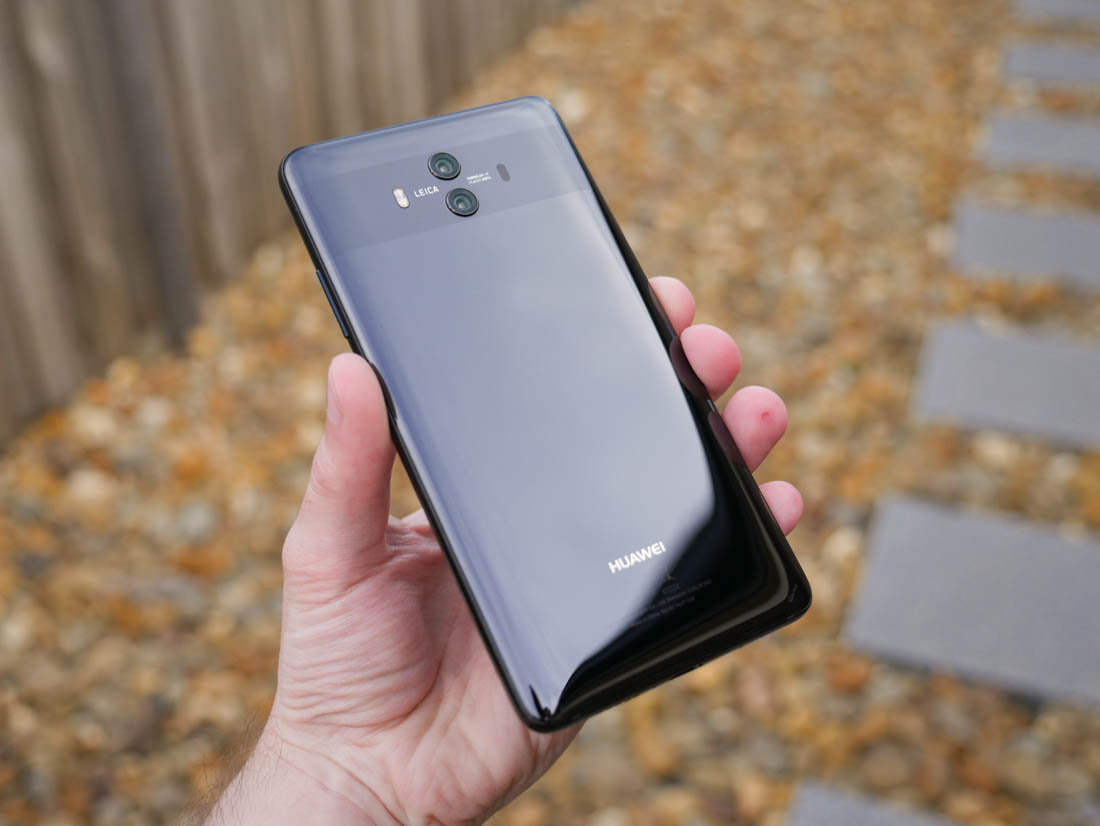
The Mate ten and Mate 10 Pro are the first phones on the market to include Huawei's latest HiSilicon SoC, the Kirin 970. This chip is billed as an AI powerhouse with a congenital-in Neural Processing Unit of measurement, though the CPU and GPU are ready equally Snapdragon 835 competitors. We've seen a lot of flagships use the Snadpragon 835, so the Mate x with its Kirin 970 will provide an interesting discussion later in this review.
For the Mate 10'southward pattern, Huawei has gone with glass on the front and rear, similar to a number of flagship phones on the market today. The edges appear to be metal, though they are coated with an extremely glossy finish with a texture similar to the rear drinking glass. The result is a phone that looks okay, merely doesn't reach the heights of the all-time metallic-glass combinations of the year.

One of my key concerns with this option of materials is just how slippery the Mate 10 is. The use of sleeky metal edges along with an expansive glass dorsum makes this telephone hard to grip, an event that is exacerbated by the size of the handset. The highly reflective nature to the glass back also makes the phone a fingerprint magnet, particularly the black model I received to review.
Perhaps the strangest element to the Mate 10's blueprint is the ridged strip that encompasses the photographic camera array. The ridging is visible, however there's no bodily texture to that area: the ridging is underneath the glossy blanket. Conspicuously Huawei were attempting to add some involvement to the rear panel, but what they've washed just looks a bit weird.
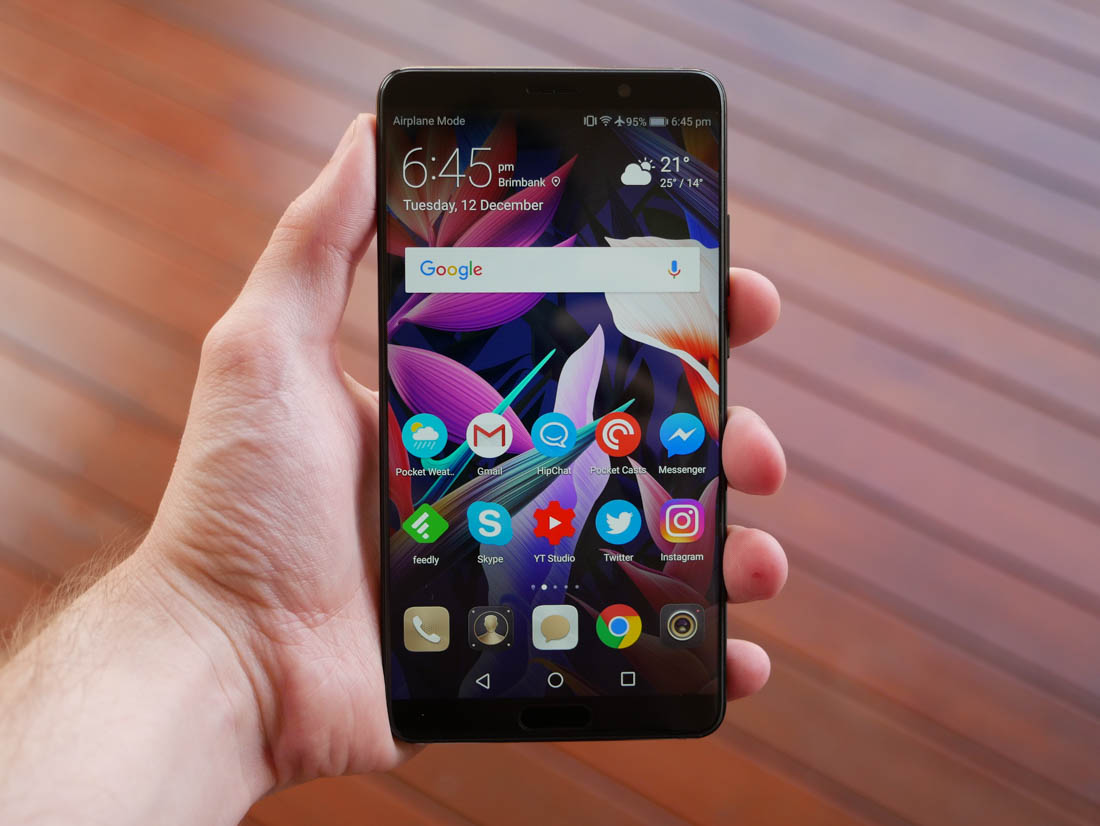
The front of the handset is a completely unlike story. While this telephone doesn't use a tall aspect ratio, the 16:9 panel is integrated in such a manner that bezels are minimized. The 5.nine-inch console is huge, yet the bezels on either side of the display are very slim; slimmer than many other 'slim bezel' handsets. And on the elevation and bottom, only the blank essentials are included in a small sliver.
Surprisingly, the Mate ten retains a front end fingerprint sensor despite its small bezels. On a handset of this size, having a fingerprint sensor and so far downwards the front end of the face makes it somewhat awkward to reach and activate. I feel a rear sensor would have worked better here, like on the Mate 9.

Despite these nitpicks, I love the expansive display on the Mate 10. Information technology'south larger in screen existent manor than the 6.0-inch 18:9 console on the Mate ten Pro, and even though the Mate 10 is near the limits of what I detect comfortable to concord, I didn't find the huge brandish all that hard to operate. If you prefer smaller devices like the Huawei P10, Pixel 2 or iPhone 8, I'd steer articulate of this phone though.
As for features, I'one thousand really glad Huawei has kept the 3.5mm headphone jack. Honestly, it doesn't make sense why the more expensive Mate 10 Pro removes this port when information technology is and so unremarkably used. And it'south not merely a headphone jack that the Mate ten has over the Mate x Pro: there'southward also a microSD menu slot, another odd omission from Huawei's supposedly more premium choice.
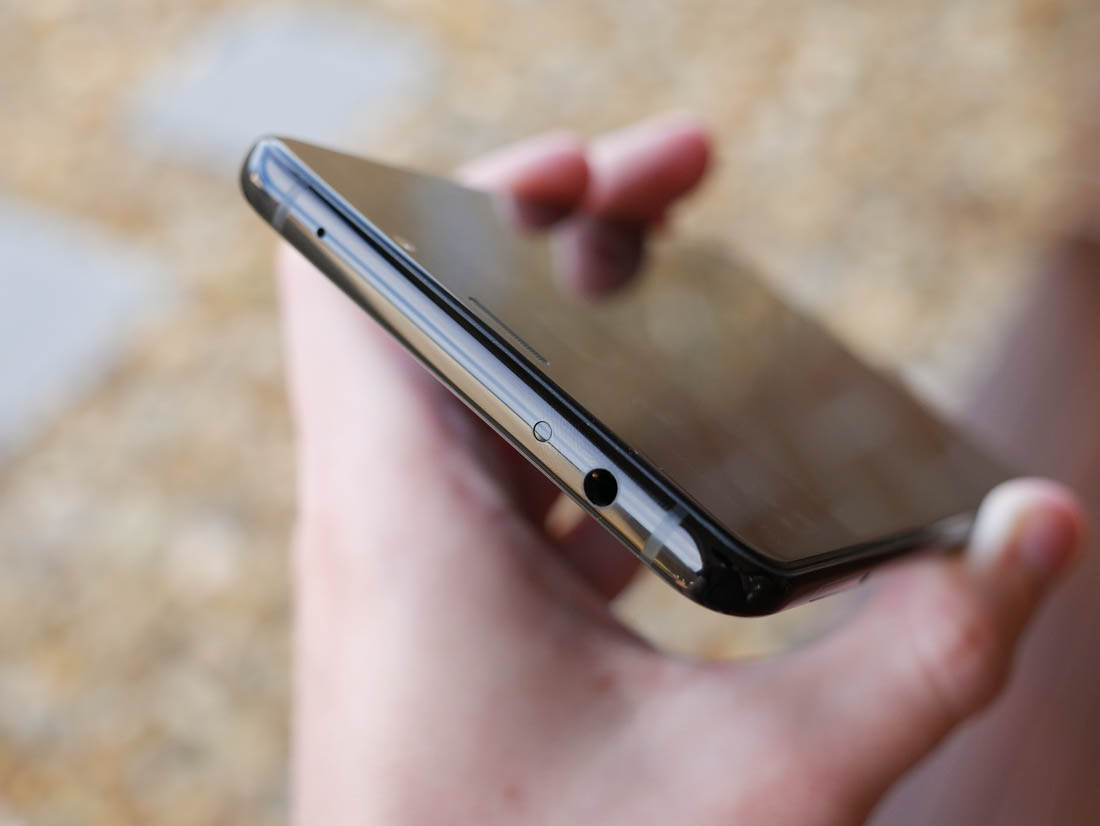
What you don't get with the Mate 10 is full IP67 h2o resistance, though the telephone is IP53 certified for light splash protection. For a lot of people, IP53 is all y'all need to prevent coffee spills or rain from destroying the handset, though 1 clear advantage to the Mate 10 Pro is its superior toughness in this regard.
The speakers on the Mate ten are unimpressive. The bottom firing speaker combines with the in-call speaker above the brandish for a stereo-like effect, but the bottom speaker is much more powerful, and so when viewing videos or playing games in mural, the sound feels unbalanced. It would take been difficult to include truthful stereo front facing speakers on this device, so information technology'southward like shooting fish in a barrel to run across why Huawei opted for this instead.
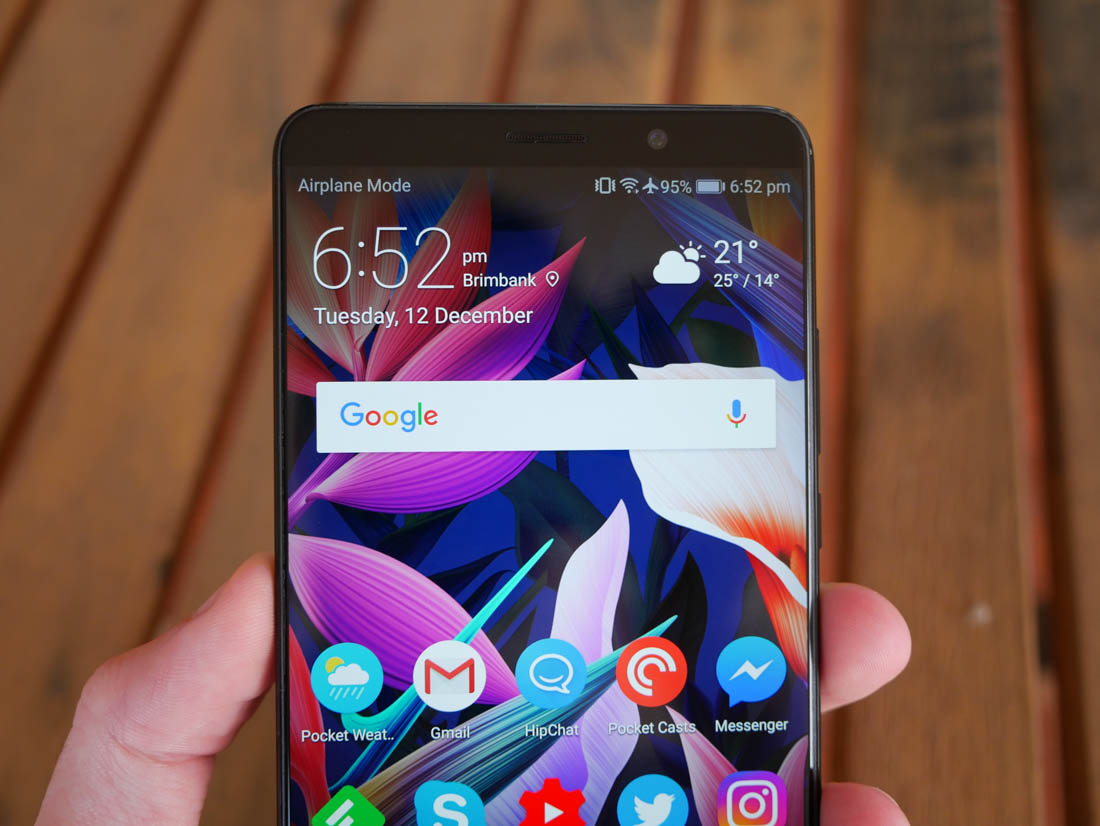
It'due south keen to see Huawei finally use a loftier-resolution display on their top-cease handset. The Mate 9, P10 and even the Mate 10 Pro all use 1080p-class handsets, which makes the Mate 10 the first to push upwardly to 1440p. Equally a upshot, this five.9-inch IPS LCD packs a pixel density of 499 PPI, and at this size you tin can observe a pocket-size difference in clarity between 1080p and 1440p.
However, the Mate 10 is set to 1080p by default in the device'south settings, so to become the most out of the handset you'll desire to push button this up to 1440p. There's even a dynamic choice if you want a mix of resolution, performance and battery life depending on the situation. I dear display quality, so I immediately set the phone to the full 1440p mode, and used this mode for all testing. This is likewise what nosotros did with other phones that have different resolution modes, which keeps a fair playing field during our tests.
The Mate 10's brandish ticks a lot of boxes: excellent viewing angles with minimal colour shift, a high maximum brightness to a higher place 630 nits, and a groovy contrast ratio for an LCD of virtually 1600:1. Unlike some other large-screen displays we've seen recently, such as in the Pixel 2 Xl, in that location'south no burn down-in concerns or uniformity issues: this LCD is much higher quality.
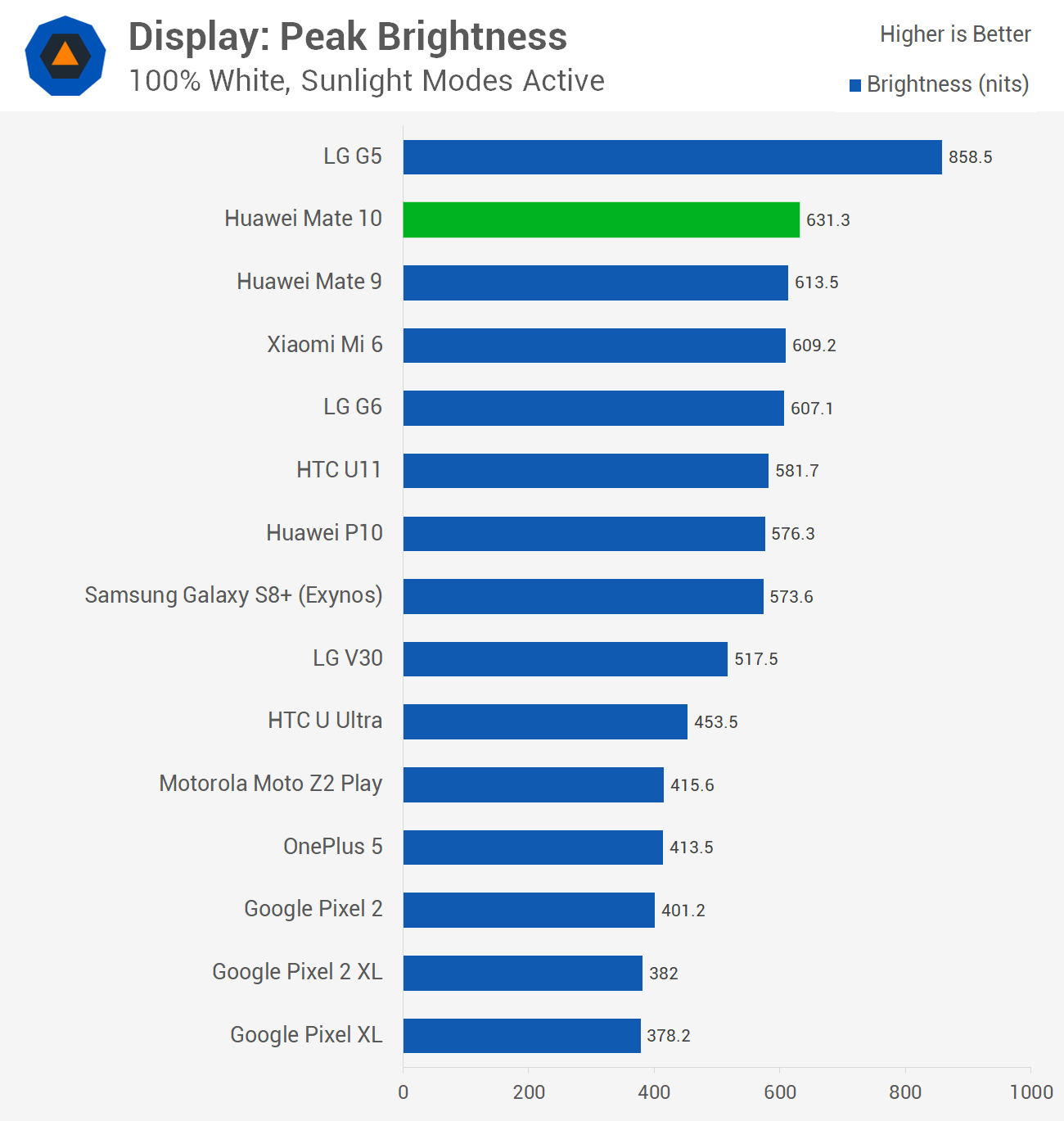


Like to near mod displays, the Mate x opts for extreme saturation, large gamuts and a common cold color temperature past default, which leads to vibrant colors that 'pop'. However, it's not very accurate, and the stiff blueish tint is harsher than many of its competitors.
Luckily you tin can make the Huawei Mate 10's brandish accurate if you lot require color accuracy or if you'd just adopt adherence to sRGB. The default color mode is 'brilliant', and then changing that to 'standard' reduces oversaturation. Information technology'southward as well worth modifying the color temperature manually; selecting a value on the very edge of the circumvolve in the orange area I establish to produce the all-time results.
With these modifications made, the Mate 10'due south display produced dE2000 values less than 2.0 across the board, which is excellent. It's not super like shooting fish in a barrel to create this color accurate mode, every bit it requires manual footling with color temperature, but the display appears to support a well-nigh-perfect sRGB reproduction should yous desire it.
Source: https://www.techspot.com/review/1537-huawei-mate-10/
Posted by: waterfieldhornou.blogspot.com


0 Response to "Huawei Mate 10 Review"
Post a Comment